CLIP170 enhancing FOSL1 expression via attenuating ubiquitin-mediated degradation of β-catenin drives renal cell carcinoma progression
- PMID: 39607512
- PMCID: PMC11604886
- DOI: 10.1007/s00018-024-05504-9
CLIP170 enhancing FOSL1 expression via attenuating ubiquitin-mediated degradation of β-catenin drives renal cell carcinoma progression
Abstract
Protein interactions are fundamental for all cellular metabolic activities. Cytoplasmic linker protein 170 (CLIP170) plays diverse roles in cellular processes and the development of malignant tumors. Renal cell carcinoma (RCC) poses a significant challenge in oncology owing to its invasive nature, metastatic potential, high recurrence rates, and poor prognosis. However, the specific mechanisms and roles of CLIP170 underlying its involvement in RCC progression remain unclear. The findings of this study revealed a significant upregulation of CLIP170 in RCC tumor tissues. Elevated CLIP170 expression correlated positively with advanced clinical and pathological stages and was associated with poor overall survival in RCC patients. Functional assays in vitro demonstrated that elevated CLIP170 levels enhanced RCC cell proliferation, migration and invasion. Mechanistically, 4D-label free proteomics library identified that CLIP170 increased the level of FOSL1 in the Wnt signaling pathway. Immunoprecipitation and molecular docking were performed to unveil that CLIP170 formed a complex with β-catenin, inhibiting β-catenin degradation via the ubiquitin-proteasome pathway. Elevated β-catenin levels within RCC cells played a central role in promoting the transcriptional expression of FOSL1, thereby facilitating RCC cell proliferation and epithelial-mesenchymal transition (EMT) progression. In vivo investigations corroborated these findings, illustrating that CLIP170 regulated β-catenin and FOSL1 expression, driving tumor growth in RCC. This study highlights the crucial role of CLIP170 in promoting FOSL1 expression by preventing β-catenin ubiquitination and degradation, thus promoting RCC tumor progression. It suggests the CLIP170/β-catenin/FOSL1 axis as a potential therapeutic target for RCC treatment.
Keywords: CLIP170; Epithelial-mesenchymal transition (EMT); FOSL1; Renal cell carcinoma; Ubiquitin–proteasome pathway; β-catenin.
© 2024. The Author(s).
Conflict of interest statement
Declarations. Conflict of interests: The authors declare that they have no known competing financial interests or personal relationships that could have appeared to influence the work reported in this paper. Ethical approval: All procedures were conducted in accordance with the Declaration of Helsinki and approved by the ethics committee of the Second Affiliated Hospital of Dalian Medical University (Approval No. DYEY-2023-184). Written informed consent was obtained from all patients. All animal experimentation was approved prior to implementation, and all procedures were performed rigorously in accordance with the requirements of the Animal Experimental Ethical Committee of Dalian Medical University Laboratory Animal Center (Approval No. AEE23056).
Figures

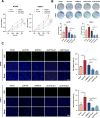
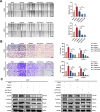

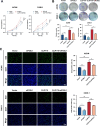

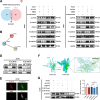
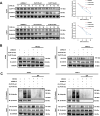

Similar articles
-
SPOP promotes tumor progression via activation of β-catenin/TCF4 complex in clear cell renal cell carcinoma.Int J Oncol. 2016 Sep;49(3):1001-8. doi: 10.3892/ijo.2016.3609. Epub 2016 Jul 6. Int J Oncol. 2016. PMID: 27572476
-
Transcription Factor FOSL1 Promotes Cisplatin Resistance in Non-Small Cell Lung Cancer Cells by Modulating the Wnt3a/β-Catenin Signaling through Upregulation of PLIN3 Expression.Front Biosci (Landmark Ed). 2025 Mar 19;30(3):26898. doi: 10.31083/FBL26898. Front Biosci (Landmark Ed). 2025. PMID: 40152390
-
Circular RNA MTCL1 promotes advanced laryngeal squamous cell carcinoma progression by inhibiting C1QBP ubiquitin degradation and mediating beta-catenin activation.Mol Cancer. 2022 Apr 2;21(1):92. doi: 10.1186/s12943-022-01570-4. Mol Cancer. 2022. PMID: 35366893 Free PMC article.
-
Natural Products and lncRNAs in Renal Cell Carcinoma: Emerging Therapeutic Approaches.J Gene Med. 2025 Jun;27(6):e70026. doi: 10.1002/jgm.70026. J Gene Med. 2025. PMID: 40474350 Review.
-
Kidney cancer: From tumor biology to innovative therapeutics.Biochim Biophys Acta Rev Cancer. 2025 Feb;1880(1):189240. doi: 10.1016/j.bbcan.2024.189240. Epub 2024 Dec 12. Biochim Biophys Acta Rev Cancer. 2025. PMID: 39674419 Review.
Cited by
-
Elucidating the anticancer potential of dendrobine in renal cell carcinoma treatment.Naunyn Schmiedebergs Arch Pharmacol. 2025 Jun;398(6):7517-7528. doi: 10.1007/s00210-024-03774-5. Epub 2025 Jan 7. Naunyn Schmiedebergs Arch Pharmacol. 2025. PMID: 39774907
-
Aberrant activation of IL-6/JAK/STAT3/FOSL1 signaling induces renal abnormalities in a Xenopus model of Joubert syndrome-related disorders.J Biol Chem. 2025 Jun 24;301(8):110413. doi: 10.1016/j.jbc.2025.110413. Online ahead of print. J Biol Chem. 2025. PMID: 40570958 Free PMC article.
References
-
- Ljungberg B, Albiges L, Abu-Ghanem Y et al (2019) European Association of urology guidelines on renal cell carcinoma: the 2019 update. Eur Urol 75(5):799–810. 10.1016/j.eururo.2019.02.011 - PubMed
-
- Capitanio U, Montorsi F (2016) Renal cancer. Lancet 387(10021):894–906. 10.1016/s0140-6736(15)00046-x - PubMed
-
- Campbell SC, Clark PE, Chang SS et al (2021) Renal mass and localized renal cancer: evaluation, management, and follow-up: AUA guideline: Part I. J Urol 206(2):199–208. 10.1097/ju.0000000000001911 - PubMed
-
- Hall A (2009) The cytoskeleton and cancer. Cancer Metastasis Rev 28(1–2):5–14. 10.1007/s10555-008-9166-3 - PubMed
MeSH terms
Substances
Grants and funding
LinkOut - more resources
Full Text Sources
Medical
Miscellaneous

